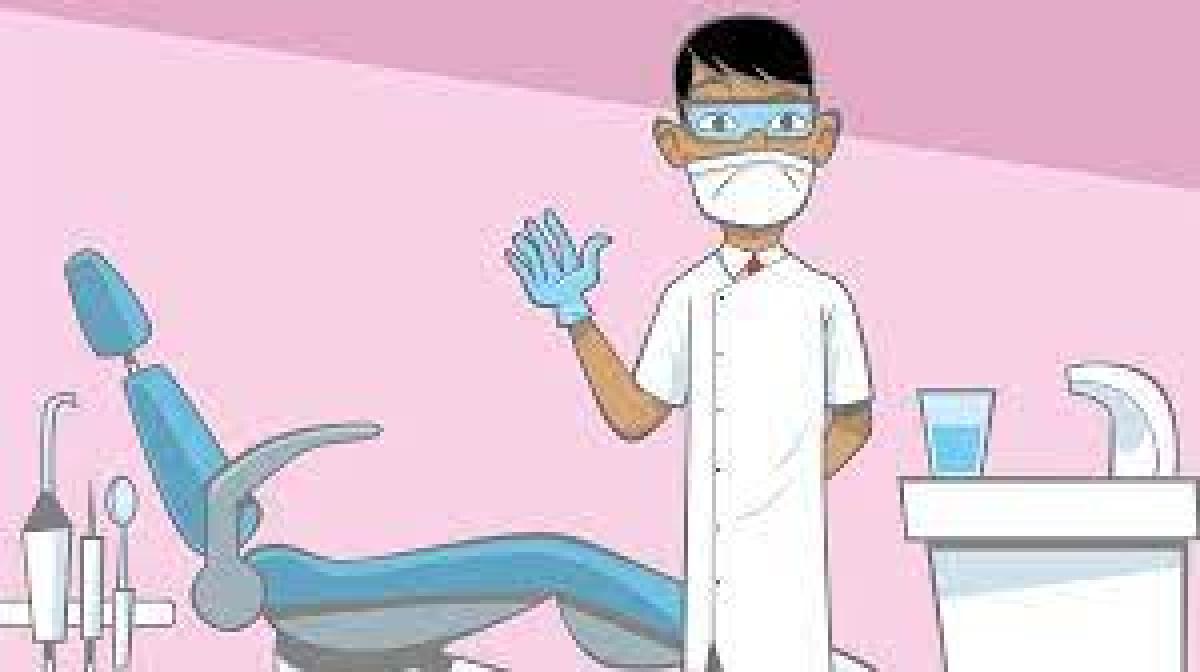A dentist is a doctor who is specially trained to care for teeth. When you visit for a checkup, your dentist will look at your teeth and gums to check for any problems. He or she will also want to make sure your teeth are developing properly as you grow.
It’s important to visit your dentist every 6 months to make sure you’re taking good care of your teeth and that your teeth and gums are healthy.
When it’s your turn to see the dentist, you’ll go into an exam room and sit down in a big, comfortable chair that is like a huge recliner. Next to the chair may be a little sink with a cup that you can use to rinse out your mouth as your teeth are being cleaned.
The dentist will look inside your mouth to make sure your teeth are growing properly and your gums are strong and health. A bright, overhead light will shine down into your mouth like a giant flashlight so that he or she can get a good look inside your mouth. The dentist will also check the way your top and bottom teeth work together. This is called your bite. If there might be a problem with your bite, you may be referred to an orthodontist – this is a doctor who specialises in correcting the shape or positions of all your teeth through orthodontia, or braces.
During your visit, the dentist may take X-rays, or pictures, of your teeth. X-rays are like superhuman vision. They can show cavities hiding between your teeth and problems beneath your gums. A cavity is a decayed, or rotted, part of a tooth. It doesn’t hurt to get an X-ray and takes only a few seconds. The dentist will put a piece of plastic (that holds the X-ray film) into your mouth. As you gently bite down on the plastic, you’ll have to be very still for a few seconds while the picture is taken.
If you have a cavity, you’ll probably have to come back to the dentist’s office for another visit. At that time, the dentist will remove the decayed part from your tooth with special dental tools. Then the decayed area will be filled with materials that will keep your tooth strong and healthy, like tooth-colored or silver fillings. The dentist will give you a tiny shot of an anaesthetic to numb the area around the tooth (your mouth may be numb for a little while after you leave the dentist, but don’t worry – the anaesthetic will soon wear off and you’ll be left with a beautiful smile!)
During your visit, the dentist or a dental hygienist may clean and floss your teeth using tiny dental tools like a tooth scraper, mirror and special toothbrush. The tooth scraper removes plaque from your teeth. Plaque is a thin, sticky layer that coats your teeth and contains bacteria (say: bak-teer-ee-uh) that grow on your teeth over time. Plaque that isn’t removed from your teeth can cause decay or a cavity.
Next comes brushing, using a special toothbrush with a small, round tip that moves around and around to clean your teeth, and toothpaste that might taste like your own toothpaste at home, but will feel a little grittier — almost like sand. Finally, they may floss your teeth and show you the proper way to brush and floss your teeth at home. Flossing involves using a piece of waxy string called dental floss to get in between your teeth and remove food particles that your brush can’t reach. If you need it, the dentist might give you an at home teeth whitening product. Use it as instructed.
Some words used at the dentist’s office might be new to you. Here are a few and what they mean:
- bacteria — tiny organisms that live on your teeth and are found in plaque
- cavity — the decayed, or rotten, part of a tooth
- dental hygienist — a person with special training about the proper way to keep teeth and gums clean and healthy
- dental X-rays — pictures of your teeth and gums that will show a dentist whether there are any cavities
- flossing — involves using a piece of waxy string called dental floss to get in between your teeth and remove food particles that your toothbrush can’t reach
- fluoride treatment — a gel or foam applied to teeth that makes them strong and helps prevent cavities
- orthodontist — a doctor who specialises in correcting the shape or positions of your teeth
- plaque — a thin, sticky layer containing bacteria that grow on your teeth
Things to look out for at the dentists:
- Dentist’s chair
- Drill
- Dental scraper
- Spitting bowl
- Hand held x-ray camera
.
> Visit Professor Hallux’s Map of Medicine homepage
Images courtesy of the Wellcome Trust
Professor Hallux’s Map of Medicine
Find out how to navigate Professor Hallux's Map of Medicine
More From Professor Hallux’s Map of Medicine



